No Jobs, Safety or Security - 672 Journos Died of Covid the Past Year
Assistance only to accredited journalists, if at all
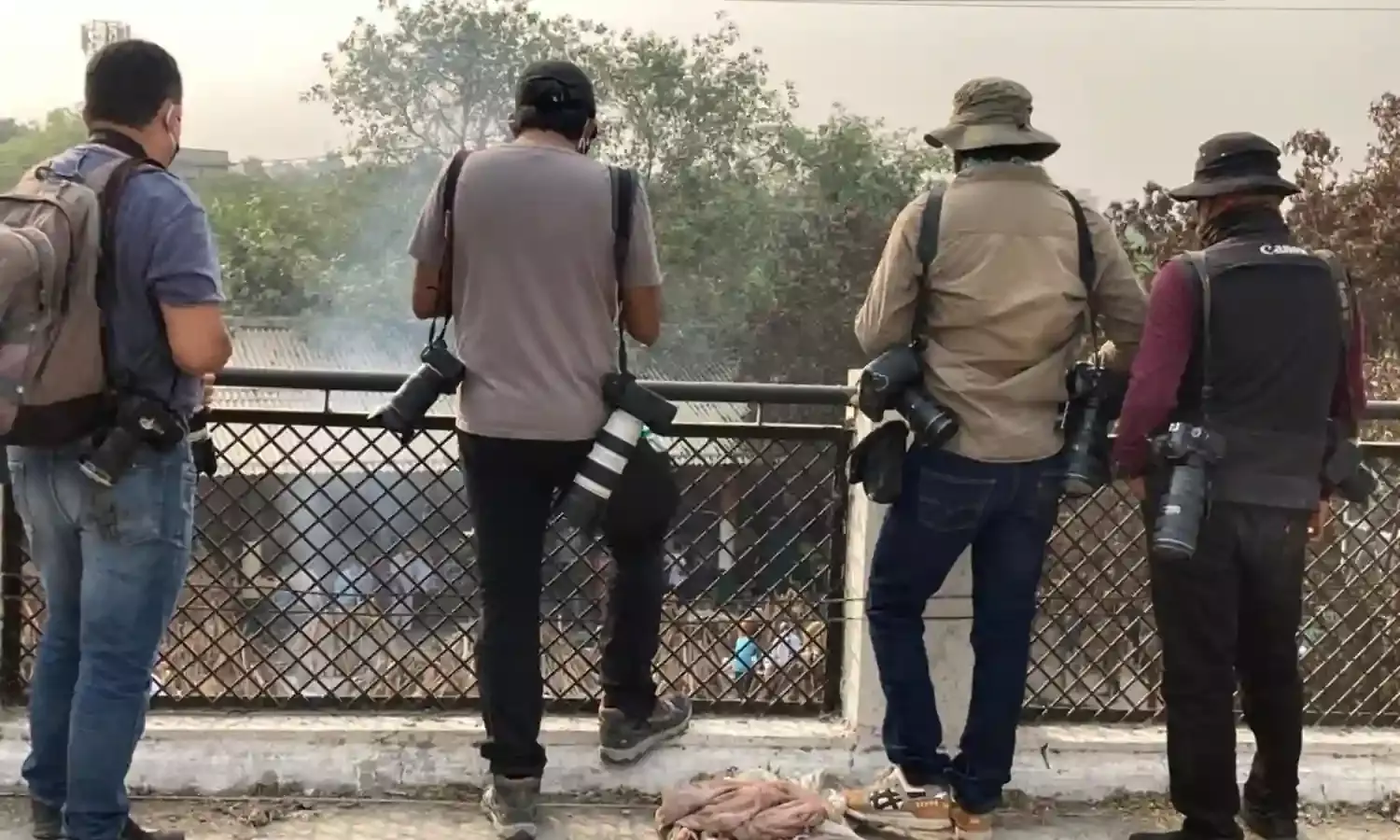
As of 24 July, 672 journalists in India had succumbed to Covid19, according to a survey by the Institute of Perception Studies.
As the nation tussled over oxygen cylinders, critical drugs and hospital facilities, journalists reeling under mass layoffs, pay cuts, lack of protection, and dangerous working conditions continued covering the crisis.
While some state governments announced financial aid to the kin of the deceased, general secretary of the Madras Union of Journalists R. Shankar points out that assistance was offered only to accredited journalists.
Governments have ignored freelancers, stringers, and technical or managerial staff.
“I lost my job at one of India’s largest circulated dailies, in the middle of the pandemic in a cost-cutting exercise, the first of two such exercises at the paper,” says Amrita Madhukalya, member of the managing committee of the Press Club of India.
As the pandemic raged, people with decades of work experience suddenly had no jobs. “In newspapers, people were asked to take pay cuts, and then entire bureaus were laid off overnight, without any safety net.”
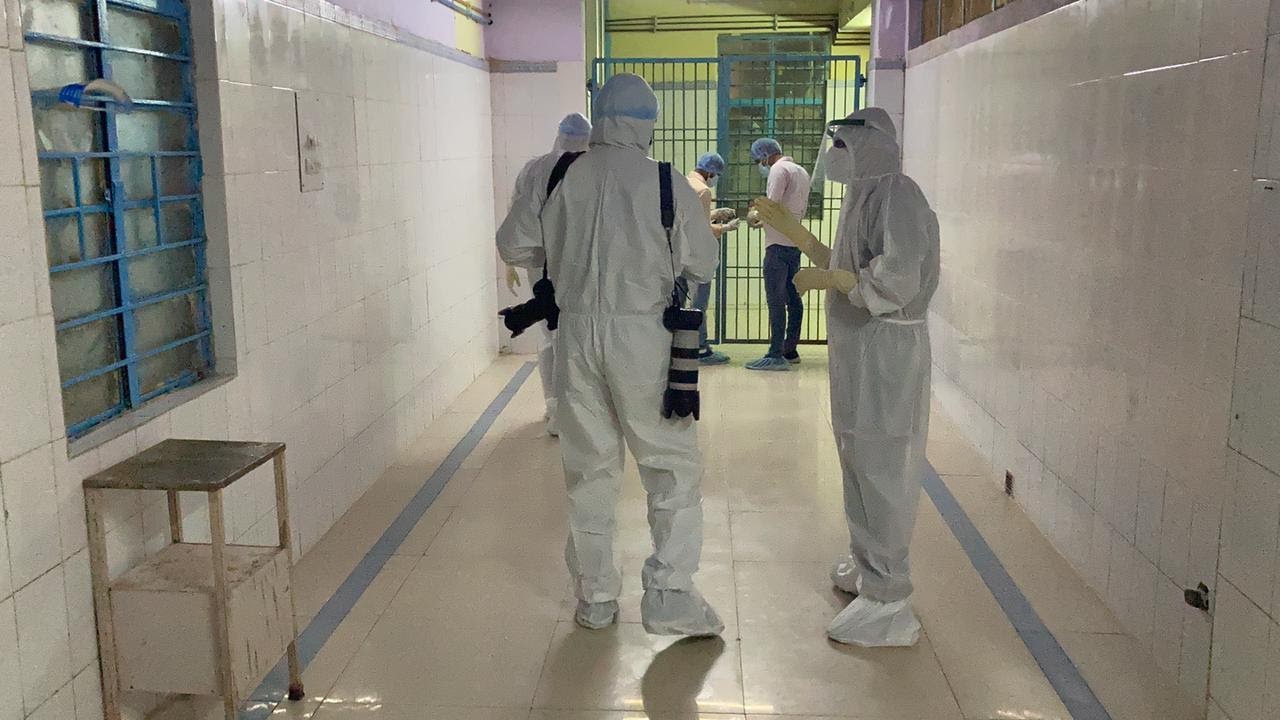
Reuters chief photographer the late Danish Siddiqui on assignment
As per a YouGov-Mint-CPR survey, millennials (aged 24 to 30) were the most affected by pandemic lockdown layoffs, while the older cohorts suffered cuts in pay.
“I have come across a lot of people from the industry who have either lost their lives or livelihood due to the pandemic,” says Priyam Singh, editor of the NCR-based company Sportzwiki Media.
“The government could have come up with means and ways to socially secure the journalists who lost their jobs.”
It took till March 2021 for some governments to declare journalists “frontline workers”, like in Rajasthan, which rolled out an insurance scheme for ex-gratia payments Rs.50 lakh. Again, however, the compensation is restricted to journalists with government accreditation.
Last May the director of the Delhi-based Institute of Perception Studies, Kota Neelima filed a petition in the Supreme Court for urgent relief measures for journalists.
The petition says that most journalists’ deaths have taken place among those without accreditation (57%) while freelancers account for 16 percent.
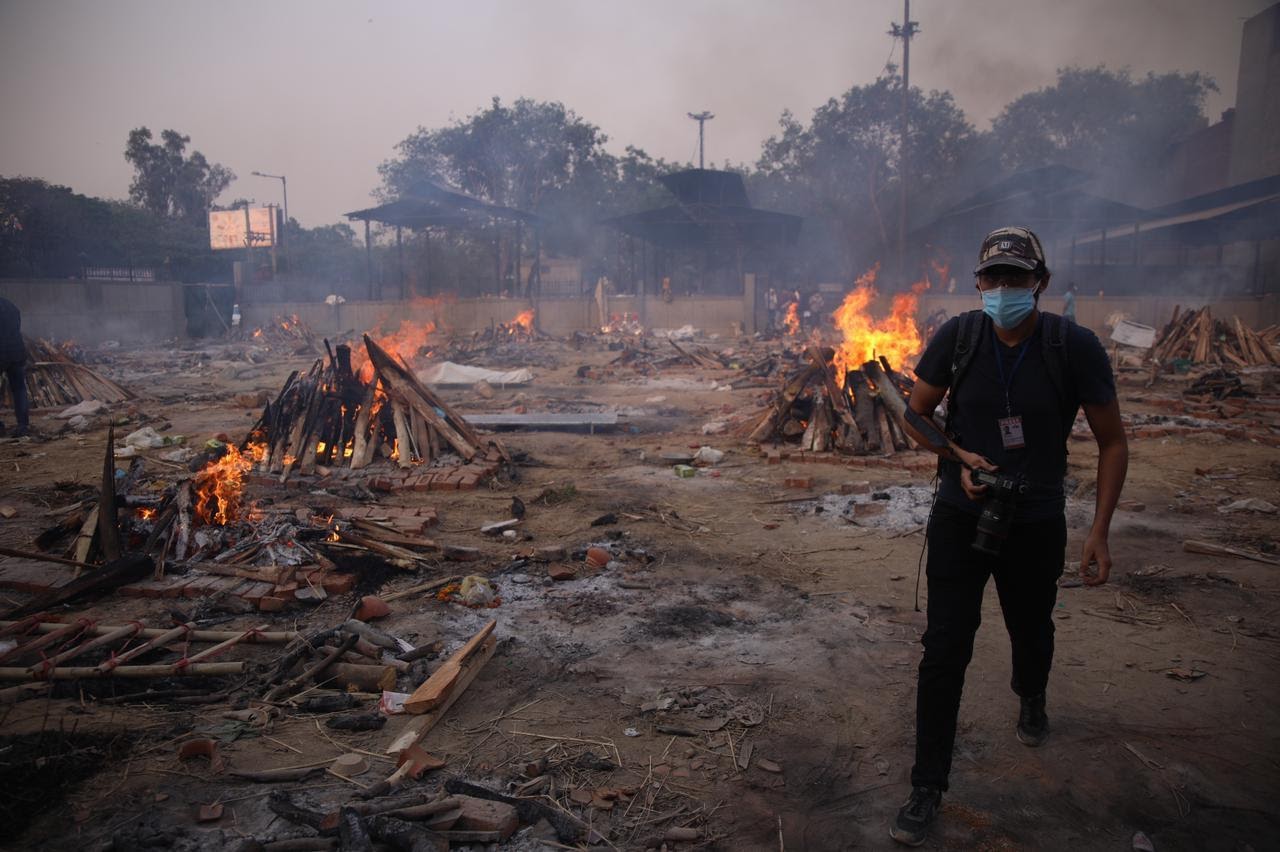
Journalist Seraj Ali at the crematorium
“Accreditation is not given to freelancers. The number of years they need to put in as basic criteria will be thrice the number needed from a regular reporter,” says Amrita Madhukalya.
Meanwhile “stringers operate on a per diem basis, and anyone who lands a retainer is simply lucky.”
The IPS study found a lack of medical facilities for journalists who have been working tirelessly through the pandemic as frontline workers, without adequate protection or compensation.
With no source of medical assistance or compensatory support, freelance photojournalist Tehreem Fatima chose not to work on the ground to avoid putting her family at risk.
“I live in a joint family and there are children,” she says. Fatima continued covering stories around her, however, doing a photo story on her nephew for Google.
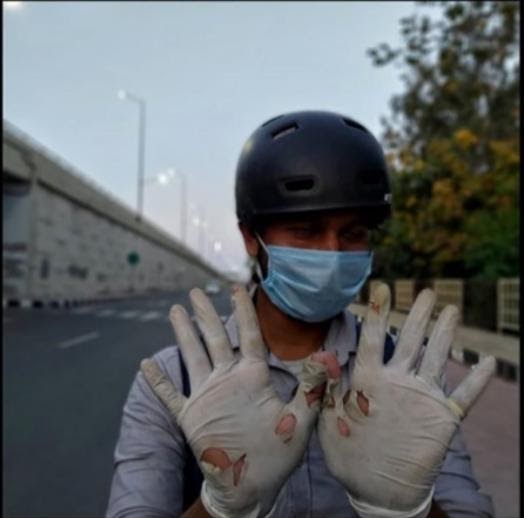
Photojournalist Md Meharban with gloves torn after covering the crisis (Photo by Rehan Khan)
Freelance photojournalist and documentary-maker Md Meharban shared his experience of ground reporting amidst the pandemic. He said that in the initial days, only a few freelancers were covering stories from the ground.
He would mostly see journalists from mainstream media organisations, wearing PPEs and fully covered. “I did not have the budget, but I nevertheless covered the crisis because I don’t do my job for money, I do it to tell stories through my photographs.”
For Obaid Majeed, founding editor of the Kashmir-based magazine Mountain Ink the pandemic “has only added to the misery, in the sense that you need to work as a frontline ‘messenger of news’ while witnessing the worst.”
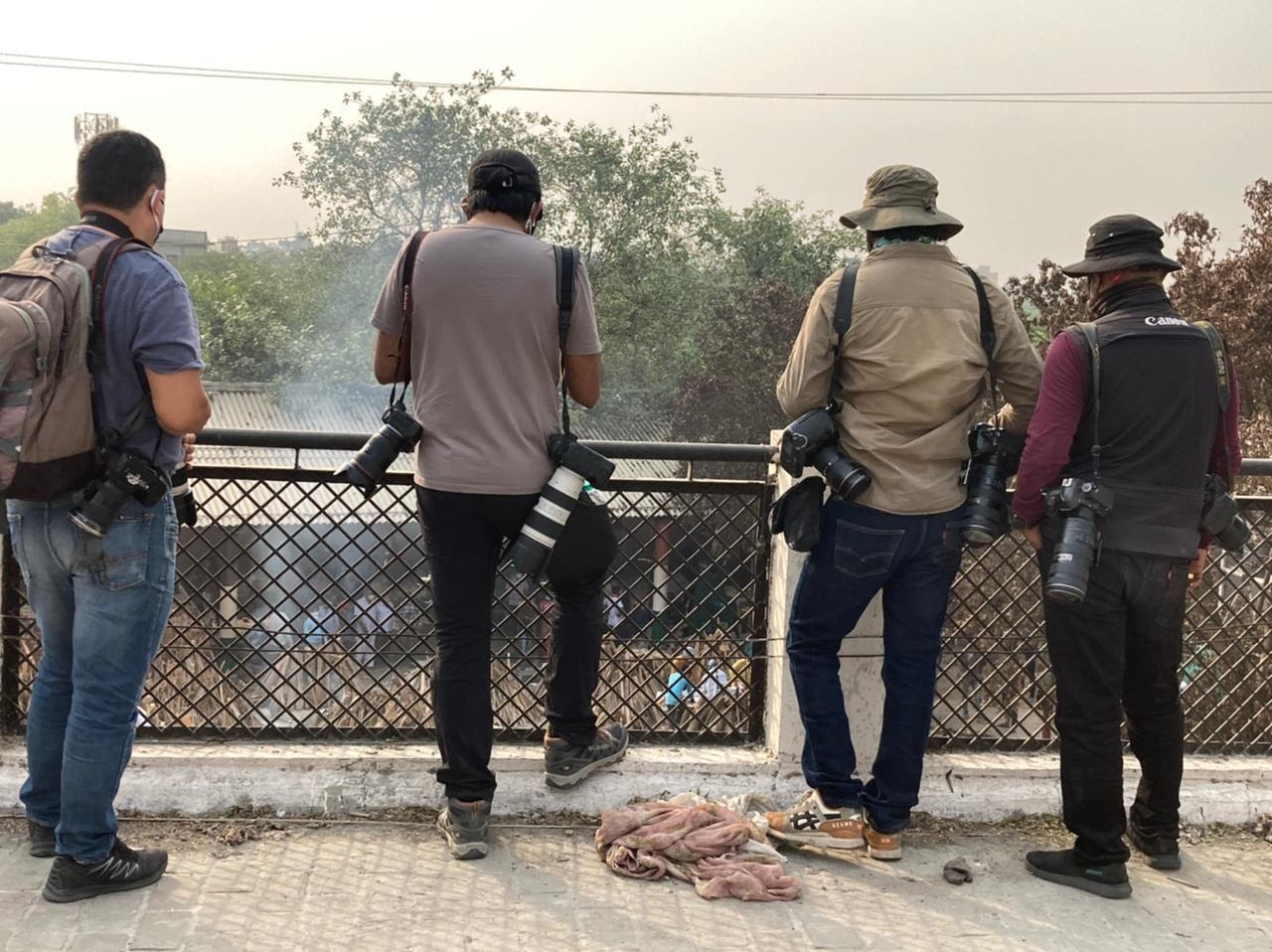
Journalists have paid a heavy price in the past year: India ranks first in the number of journalists’ deaths due to Covid and near the bottom on the Index of Press Freedom (142 of 189) according to the Press Emblem Campaign and Reporters Without Borders respectively.
Those who could afford to report from the ground often faced a backlash. According to a report by the Committee to Protect Journalists, 24 journalists had FIRs registered against them for reporting the Covid crisis between March and December 2020.
“There was a huge number of press freedom violations during the pandemic; half of it, as I remember, was to do with reporting on covid cases and another half were non-covid cases,” said Kunal Majumder, Indian correspondent at the CPJ.
Amrita Madhukalya observed that “India’s press freedom rank has consistently continued to dip. For many, journalism cannot be an affordable gig, and they do it as an additional job.”
In most cases the brunt is borne by reporters who live in villages and small towns. The Institute of Perception Studies survey found that 76% of the journalists’ deaths occurred in non-metro regions.
With many pending political problems, press freedom being crushed and healthcare facilities under-resrouced, journalists do not get administrative precedence.
With occasional exceptions. “Journalists were allowed to be vaccinated exclusively at the Kashmir Press Club on a rolling basis,” says Obaid Majeed.
A vaccination drive for journalists was crucially needed because they had to go everywhere, from hospitals to crematoriums to burial grounds. Yet not until the second wave did the states start giving journalists vaccination priority.
“We needed to be vaccinated because not only can we spread the virus, we could become infected, too,” said Seraj Ali, a multimedia reporter.
According to Madhukalya, “The fault lies in the fact that journalists in this country have not been declared as frontline workers. Had they been, we would have saved many more lives.”
Photographs by freelance photojournalist Md Meharban


